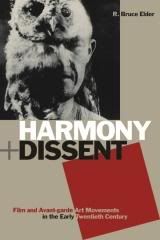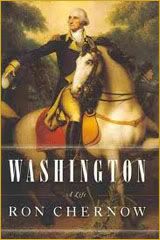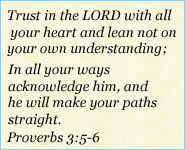And a descent into the netherworlds
 |
Harmony and Dissent: Film and Avant-garde
Art Movements in the Early Twentieth Century
There are many things to decipher about Bruce Elder's fascinating presentation on his film, which I attended this past summer. I have seen his latest 2 1/2 hour film The Young Prince, which was a visceral cacophony of images, with some recurring themes. It was a kind of ode to modernism with many recognizable modern paintings (Mondrian, Braque), it used occult and alchemic imagery as some kind of symbolism, and many images were computer manipulated. It is in that way an erudite film, encompassing the arts and sciences (one obvious theme was in squaring the circle, which is an impossibility, but I saw it as the ultimate attempt for perfection - a kind of utopia - and an aim at infinity, all impossible), and modern technology was an important theme. In the realm of experimental films, you could call it a magnum opus.
But, as I wrote earlier, experimental films are always disturbing. They don’t attempt to guide the person through a path of coherence, but through a path of incoherence.
These are not naïve or haphazard films. There is much thought, strategy and filmic manipulation that goes on to get these effects. And there are a couple of strategies Elder uses in his filmmaking system for The Young Prince.
- Juxtaposing different or contrary images together, to arrive at a new synthesis.
- Allowing chance (or randomness) into the process.
At this presentation, he talked about a software he developed which “randomly” placed strips of images (or single images) together that were similar.
My question to him at the end of the presentation was two-fold:
1. If his aim is to put unconnected images together to build a new synthesis, then his software is not doing the trick, since it is randomly putting together images that are similar.
2. His software is not really random, because he has already picked the images that are to be used and has programmed them into his software. More precisely, his software is working within a non-random system of his own chosen images.
His answers were not satisfactory since he dwelt on the random process of choosing images, and not on the closed system he had already built for that randomness.
And about similar images being at the core of the software, unlike his stated goal of bringing different images together, he said that since there is such a variety of images in the database, eventually a juxtaposition differences will occur in the overall film to give that new synthesis.
I am writing this long piece to show the cracks and faults in experimental filmmakers. I am surprised that they never catch themselves out.
1. His strategy of juxtaposing differences to make a coherent whole failed because of the software.
2. He may be using chance, but his film is really a piecing of his very carefully chosen images – of modern paintings, alchemic and occult signs, computer graphic manipulations, and of course sound which is as “experimental” as the images.
What do experimental filmmakers want, for us and for them?
First, I think they want to forfeit responsibility over the image. I think that is why Elder is insisting on “chance” and randomness, all the time. Whereas in fact, he controls very carefully what images are subjected to this “chance.”
Secondly, they want the unusual, the unexpected, the uncanny and in their eyes, the new. Hence the title “experimental.” Elder thinks he can achieve it with his (failed) juxtaposition of unexpected and unconnected images. But, like he said, the overall film does focus on strangeness and difference, simply because the images he chose were different and often strange. It wasn't in the impersonal software, but in his own personal choices that this strangeness comes out.
What they want from the us in the audience is to be perturbed and disconcerted. They want to take us out of our ordinary world and into their own constructed ones. Carefully constructed, as I have shown. Despite all claims of non-responsibility toward the images (i.e. emphasis on chance), Elder is actually making very conscious decisions about his images. But he doesn't want the responsibility of their weirdness, and would rather attribute them to chance, or a computer software, or his unconscious self, or some other force.
Why this alienation from this world? Well, they are unhappy with it. Elder unabashedly used the occult and alchemic symbols in his film, and he quoted from the apocryphal Acts of St. John at the end of the film. Their quest is ultimately a spiritual one, to take us out of this world and into another. My final thoughts before I left that discipline was that they were trying to take us down into some strange abyss. And this became more evident with this last film.
Elder is saying: “I have no responsibility over the images, they are being generated by a force other than my own (e.g. chance, a god, the devil)." And with his editing system and his choice of strange images and effects, he is disjoining our thought processes, making them incoherent and out of our control, so it becomes easier for us to enter, or be coerced into, this other world.
I hate to conclude it like this, but I have finally come to a decisive conclusion that such filmmakers, and Elder in particular, have nowhere positive to take us.
Here are short reviews I did of Elder’s latest book Harmony and Dissent: Film and Avant-garde Art Movements in the Early Twentieth Century, and on his film The Young Prince.
New Books on Art: Beauty, Dissent and Wreckage
The Destruction of Art by Artists: Comment on Bruce Elder's film "The Young Prince"














